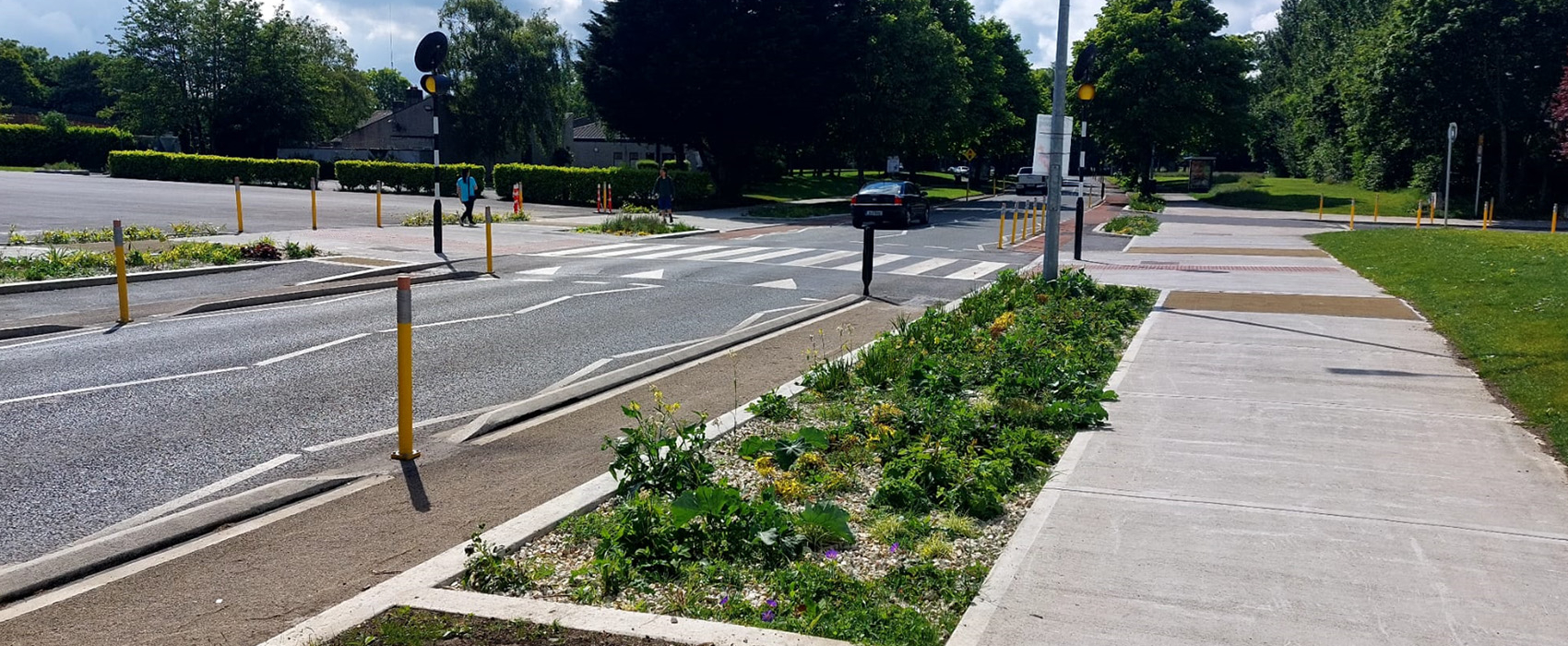Active Travel Advice Note:
Greening and Nature-based SuDS for Active Travel Schemes
This document has been developed to provide Design Engineers with a comprehensive advice note on ways in which Greening and Nature Based SuDS can be implemented and retrofitted into new and existing projects. The goal is to provide inspiration on potential SuDS interventions, as well as practical information in relation to dimensions, planting, challenges, and potential solutions to the designer. This advice not is not intended to replace existing guidance or legislation. It has been formulated to provide advice on what has worked well and not so well from lessons learned on other project experience.
What are Nature-based Sustainable Drainage Systems (SuDS)?
Sustainable Drainage Systems (SuDS) not only reduce the risk of flooding, but also improve the quality of water that enters our watercourses. SuDS is a broad term and there are numerous features that could be classed as SuDS from rainwater butts to large ponds. This advice note focuses on those elements that could be installed within an existing, constrained streetscape, and refers primarily to nature-based
SuDS which also enhance biodiversity and amenity through the introduction of plants, making for more ecologically valuable and more attractive places.
Nature-based SuDS features will generally rely on surface water flows being directed to areas of planting where the water is absorbed by soils, irrigating plants and dispersed back into the air through evapotranspiration. In suitable ground the water can also soak away, or infiltrate into the ground.
The interventions listed in this document range from the protection and retention of existing green space within new schemes, the introduction of new above ground planters which would provide amenity and biodiversity benefits, but have a limited role in terms of surface water management, through to rain gardens that positively contribute to surface water management. Bioswales (rain gardens on a slope) and tree pits are included as part of the rain garden family in this advice note.
